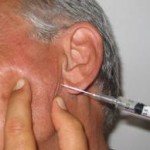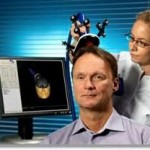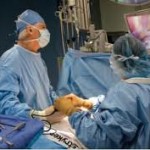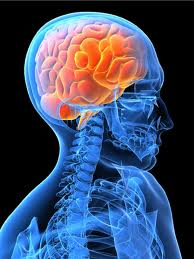Dystonia disease is the involuntary contraction of the muscle resulting to unmanageable twisting part of the body which is affected. The symptoms of dystonia disease can be mild or serious. It may also hinder with the actions of daily activities. Dystonia disease is divided into two groups, the generalized and the focal. Generalized is the type of dystonia that starts during adolescence period that in the long run may affect the whole body. Focal is the type of dystonia that take place during adulthood and have a tendency to affect only one part of the body, frequently the face, neck or arm.
What are the symptoms of dystonia disease?
- Uncontrolled contractions of the muscle that can lead to indistinct look or posture.
- It starts in one part of the body like in the face, hand or foot.
- It does happen during a definite movement like for instance, there is an uncontrolled contraction in one leg when running but not when walking backward or forward.
- The involuntary contractions get worse when the person undergo stress, fatigue or even anxiety.
- Plateau in only some years.
What are the causes of dystonia disease?
The real causes of most cases of dystonia disease are not yet known but there are factors to be considered like the following.
- Dystonia disease has been associated with the modified communication involving nerve cells positioned in the basal ganglia, part of the brain responsible in instigating the contractions of the muscle.
- Medical researchers found out that a number of genetic changes connected with definite hereditary type of dystonia. On the other hand, the majority cases of focal dystonia have not been related to genes.
- There are also other persistent disease causing the symptoms of dystonia like Huntington’s disease, Parkinson’s disease, brain tumor, stroke, traumatic brain damage, infections like encephalitis, side effects of some certain medications and carbon monoxide poisoning.
What are the complications of dystonia disease?
Person affected with dystonia disease may experience the following complications.
- Lasting physical malformation.
- Physical incapacitated to the everyday activities.
- There is a community misunderstanding, because some people think that the cause of disordered actions is mental illnesses.
- Feeling of pain and tiredness since the stable involuntary contractions of the muscles is can be compared to nonstop workout.
- Functional loss of sight if the part of the body affected with dystonia is the eyelids.
- A husky voice develops if the affected part of dystonia disease is the vocal cords.
These are all the factors that the person with dystonia disease may develop anxiety, depression or disappointment.
What are the treatments for dystonia disease?
There are effective treatments available in treating dystonia disease and these are some of the following.
1.    Intake of oral medications.
 Some people with an early-onset of the symptoms of dystonia disease found relieve to levodopa and carbidopa medications. It tends to enhance the brain dopamine, a neurotransmitter that is responsible in the movement of the muscles. Other medications that doctors prescribed are Benztropine, Diazepam, Trihexypenidyl, Baclofen, Clonazepam and Lorazepam. Just consult your doctor of what medication is appropriate with your present condition.
Some people with an early-onset of the symptoms of dystonia disease found relieve to levodopa and carbidopa medications. It tends to enhance the brain dopamine, a neurotransmitter that is responsible in the movement of the muscles. Other medications that doctors prescribed are Benztropine, Diazepam, Trihexypenidyl, Baclofen, Clonazepam and Lorazepam. Just consult your doctor of what medication is appropriate with your present condition.
2.    Application of sensory trick.
 A widespread trend related with dystonia disease is known as sensory trick. It is about the touching of the part of the body that can notably lessen the contractions of the muscle. Like for instance, putting a hand on the chin or on the side of the face may lessen the contractions of the neck muscle. This technique may also use or apply of the person with dystonia to lessen their own uncontrollable muscle contractions.
A widespread trend related with dystonia disease is known as sensory trick. It is about the touching of the part of the body that can notably lessen the contractions of the muscle. Like for instance, putting a hand on the chin or on the side of the face may lessen the contractions of the neck muscle. This technique may also use or apply of the person with dystonia to lessen their own uncontrollable muscle contractions.
3.    Introduction of Botulinum toxin.
 Botulinum toxin act to get rid of the muscle contractions by obstructing the release of chemical messenger responsible for it. This botulinum toxin makes the muscle weaken momentarily once being injected into the muscle which may result to elimination of the involuntary contractions. This procedure should have to repeat for every three months since it has a gradual diminishing effect. Probable side effect of botulinum toxin is an extreme weakness of the muscle affecting the part of injection.
Botulinum toxin act to get rid of the muscle contractions by obstructing the release of chemical messenger responsible for it. This botulinum toxin makes the muscle weaken momentarily once being injected into the muscle which may result to elimination of the involuntary contractions. This procedure should have to repeat for every three months since it has a gradual diminishing effect. Probable side effect of botulinum toxin is an extreme weakness of the muscle affecting the part of injection.
4.    Application of deep brain stimulation technique.
 This technique is about the implanting of the electrode in the brain being linked to the electrode that is implanted in the chest. The stimulator produces electrical rhythm send out by means of the implanted electrode into a particular part of the brain that lessens the irregular muscle contractions. The doctor can regulate the rate and strength of electrical pulses to adjust the outcome of the treatment. However, there are risks in using this technique like infection, paralysis and possible speech difficulties.
This technique is about the implanting of the electrode in the brain being linked to the electrode that is implanted in the chest. The stimulator produces electrical rhythm send out by means of the implanted electrode into a particular part of the brain that lessens the irregular muscle contractions. The doctor can regulate the rate and strength of electrical pulses to adjust the outcome of the treatment. However, there are risks in using this technique like infection, paralysis and possible speech difficulties.
5.    Undergo surgery.
 Surgery may only be considered in some kinds of dystonia and wherein other treatments being applied have no effect. In case of surgery, surgeon may eliminate the nerves responsible in controlling the muscle contractions. This procedure may be use for neck dystonia and eyelid dystonia.
Surgery may only be considered in some kinds of dystonia and wherein other treatments being applied have no effect. In case of surgery, surgeon may eliminate the nerves responsible in controlling the muscle contractions. This procedure may be use for neck dystonia and eyelid dystonia.
All these treatments help to improve the everyday life of the person with dystonia disease. All you have to do is to seek medical advice from your doctor.
